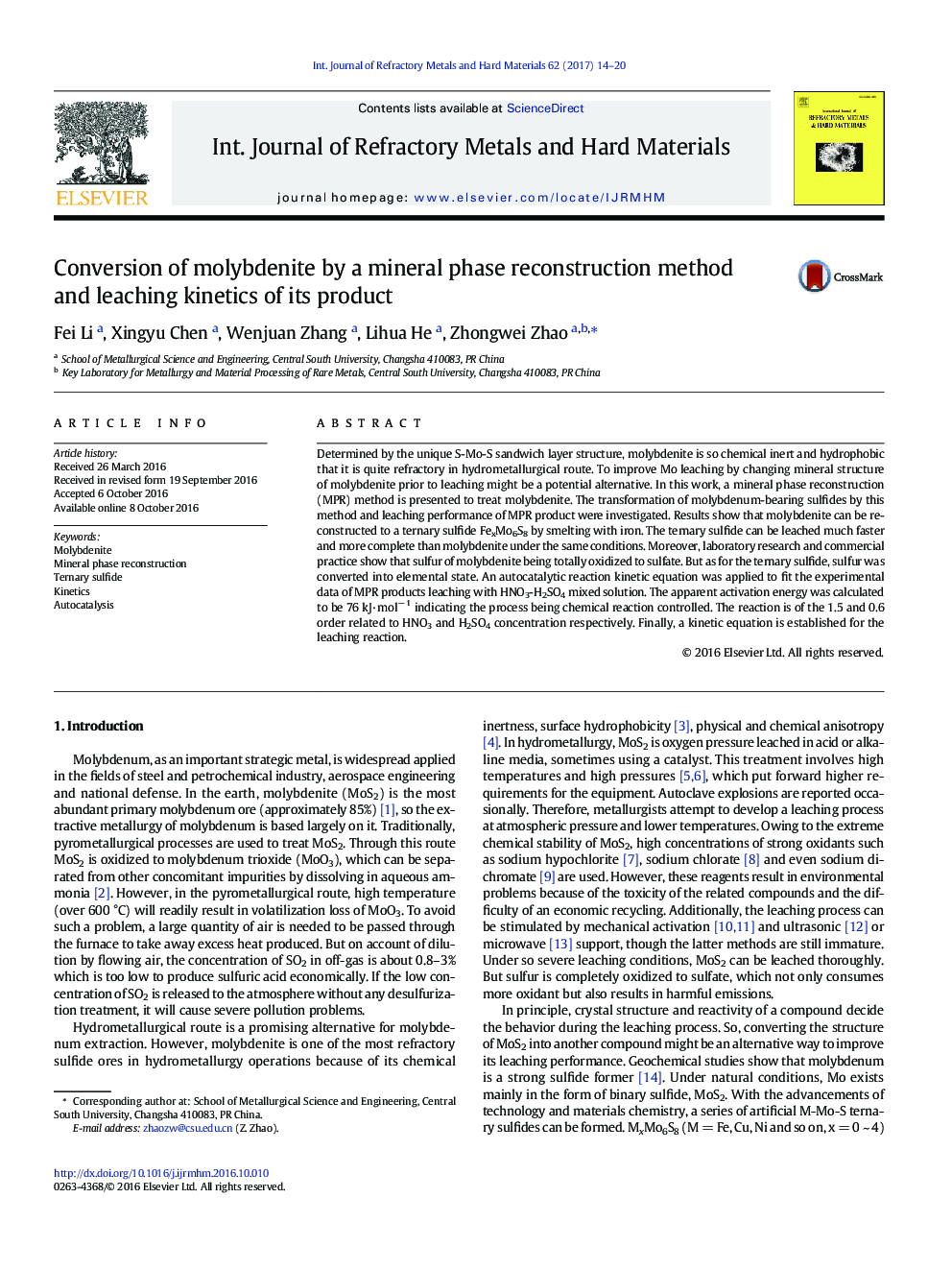| Article ID | Journal | Published Year | Pages | File Type |
|---|---|---|---|---|
| 5457796 | International Journal of Refractory Metals and Hard Materials | 2017 | 7 Pages |
Abstract
Determined by the unique S-Mo-S sandwich layer structure, molybdenite is so chemical inert and hydrophobic that it is quite refractory in hydrometallurgical route. To improve Mo leaching by changing mineral structure of molybdenite prior to leaching might be a potential alternative. In this work, a mineral phase reconstruction (MPR) method is presented to treat molybdenite. The transformation of molybdenum-bearing sulfides by this method and leaching performance of MPR product were investigated. Results show that molybdenite can be reconstructed to a ternary sulfide FexMo6S8 by smelting with iron. The ternary sulfide can be leached much faster and more complete than molybdenite under the same conditions. Moreover, laboratory research and commercial practice show that sulfur of molybdenite being totally oxidized to sulfate. But as for the ternary sulfide, sulfur was converted into elemental state. An autocatalytic reaction kinetic equation was applied to fit the experimental data of MPR products leaching with HNO3-H2SO4 mixed solution. The apparent activation energy was calculated to be 76 kJ·molâ 1 indicating the process being chemical reaction controlled. The reaction is of the 1.5 and 0.6 order related to HNO3 and H2SO4 concentration respectively. Finally, a kinetic equation is established for the leaching reaction.
Related Topics
Physical Sciences and Engineering
Materials Science
Metals and Alloys
Authors
Fei Li, Xingyu Chen, Wenjuan Zhang, Lihua He, Zhongwei Zhao,
